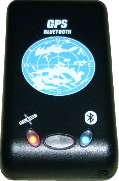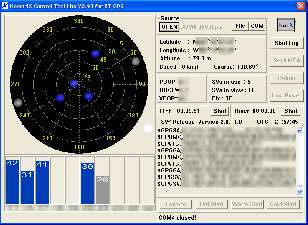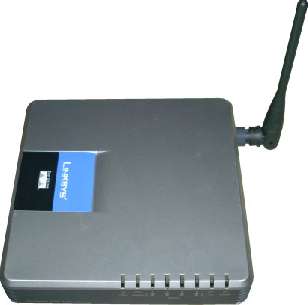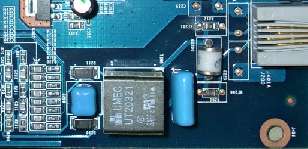Rick's b.log - 2010/09/12
You are 3.19.211.134, pleased to meet you!
Rick's b.log - 2010/09/12 |
|
| It is the 28th of April 2024 You are 3.19.211.134, pleased to meet you! |
|
mailto: blog -at- heyrick -dot- eu
I found a copy of the default manufacturer's software online. It is basic, but suffices for testing purposes.
It now makes sense. You see, the GPS satellites are always moving. When a GPS unit first starts up, it must lock into a satellite (they, uh, all use the same frequency!) and retrieve something called the almanac. This describes the orbits of the satellites. With this, a three-dimensional idea of the placement of each satellite can be created. Now, for all of the satellites "in view", the signal can be received and locked in. The GPS, as far as I'm aware, just broadcasts its idea of time (to, like, nanoseconds accuracy) as well as ident and almanac data. The receiver then uses miniscule timing differences in the received signals to calculate how far away each satellite is. And knowing its orbital position and distance, it will permit the current location to be determined. At least four satellites are required to fix a position, and the more that are picked up (the receiver claims to be able to lock into 16, but in reality any location will 'see' between 8 and 12 at any given time) the more accurate the information returned. It is able to put a precise fix on my house fairly easily, but with fewer satellites, the altitude varies randomly. And with only four satellites, you might find you suddenly start moving standing still. This is, no doubt, a side effect to the rotation of the earth and the orbits of the satellites. You are standing still, but those birds perform two rotations per sidereal day. Complicated? It's a wonder it works at all, never mind a domestic unit in my hand (costing me all of three euros!) that can give not only my location but also report on my heading and current speed.
Talking to my computer, it uses a virtual serial port to report information such as this, once per second:
Anyway, back to today. Back to the router. The Livebox is not only a pig to get into (programmatically), it is also pretty useless at providing information. I can tell you:
But history? Nope. Ability to telnet in to retrieve stats? Nope. Report on actual line quality? Nope.
I couldn't use the WAG all the time, it does not support the VoIP telephony required by our phone line.
Anyway. I got my user name and password, set up the parameters to a way that should be correct (PPPoA, VC, 8/35, pretty much everything else on auto). But no connect. I am wondering if it might be a problem with the ADSL hardware?
The router runs a form of Linux. I updated it to the latest official firmware, then went a step further to OpenWAG which gives geek access (SCP, telnet, etc). I wonder if there is some sort of way to test the ADSL device, maybe a loopback test or somesuch, which might tell me if the main IC is okay.
Never dabbled much in stuff like this, here's the phone line input circuitry:
GPS
Went to a vide grenier today. Bought myself a little GPS module for €3. The guy wanted €10 but I pointed out there was no CD or anything. He said one wasn't necessary as it was Bluetooth, and I said what about some software to make use of the thing?
Oh.
So it was three euros.


$GPGGA,000000.000,0000.0000,S,00000.0000,W,0,00,00.0,0.0,M,0.0,M,,*52
$GPGSA,A,1,,,,,,,,,,,,,0.0,0.0,0.0*30
$GPRMC,000000.000,V,0000.0000,S,00000.0000,W,0.00,0.00,210724,,,A*74
$GPVTG,0.00,T,,,0.00,N,0.00,K,A*70
I ought to be able to build a program to do something with this data. I found a bit of software (GooPS) which poked an interface between my GPS and Google Earth. After letting the latter cache the surroundings, I went for a walk partway up the driveway, and saw Google Earth keeping step with my movements. Nifty, or creepy?
Sadly, the cost of mobile data prevents fun such as realtime mapping and such. It might be amusing, however, to see if it is possible to poke current location-direction information into Google's Streetview? Why? For the hell of it, mostly. Why not? ☺
WAG200G
I thought WAGs were something footballers had, or somethings dogs did. Now I know it is a router! A Linksys-by-Cisco router, to be precise.
There isn't really a need for a router, but it would be nice to be able to hook something to the ADSL line to measure line drops. We're having something of a chronic interference problem. At specific times in the day, the internet just dies. And so does most AM radio. Given our nearest neighbouring farm is like half a kilometre away, we're looking at some extremely serious radio interference, or some truly epic mainsbourne pollution. I have some video I ought to post up here soon, you won't believe it. And, really, what's the French equivalent of the FCC?

Atténuation Up (dB) : 21,4 dB
Atténuation Down (dB) : 50,0 dB
Signal bruit Up (dB) : 2,0 dB
Signal bruit Down (dB) : 5,0 dB
Débit maximum possible ligne Up (kb/s) : 952 kb/s
Débit maximum possible ligne Down (kb/s) : 3400 kb/s
Puissance émise (dBm) : 12,5 dBm
Puissance reçue (dBm) : 17,6 dBm
(before you say OMG! I will point out that the line is some 4500 metres; and I'm fixed at ~256 kb/s up and 2048 kb/s down)

No comments yet...
| © 2010 Rick Murray |
This web page is licenced for your personal, private, non-commercial use only. No automated processing by advertising systems is permitted. RIPA notice: No consent is given for interception of page transmission. |